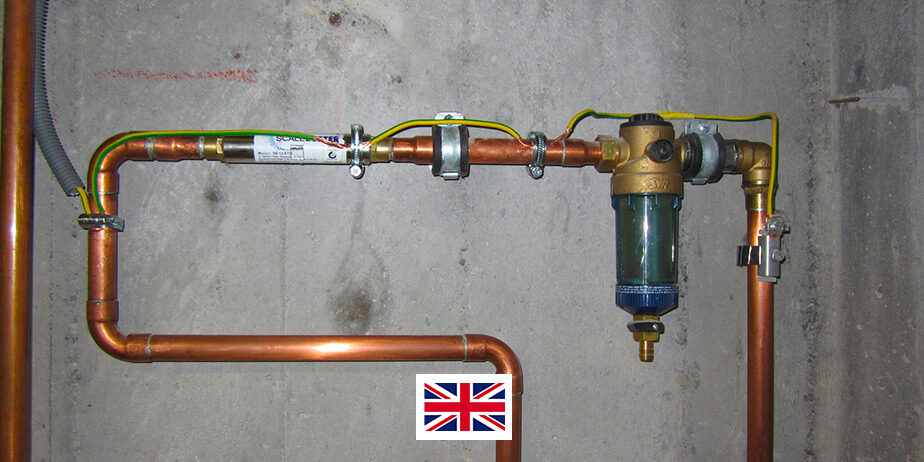Search your suppliers of eco-responsible solutions by filters
SCALEBUSTER
Water conditioner for heating and cooling systems
Description
Calcium hardness precipitates when the concentration of calcium and alkalinity in water reaches saturation point. The saturation point depends on temperature (the higher the temperature, the lower the saturation point) and pH (the higher the pH, the lower the saturation point).
Water exists in equilibrium and tends to dissolve or precipitate minerals to reach this point of equilibrium.
In some applications, water characteristics will change in a process or piping system, temperature will increase or pH will increase, and deposits will form in pipes and on surfaces.
In applications where the water is near but below the saturation concentration of hardness, calcium precipitation has been known to occur on pump impellers and on mixer impellers. This is mainly due to the increase in water temperature on the surface of the wheels. Although the water temperature in the tank or pump has not risen enough to cause scaling, the localized temperature at the surface of the impeller, before the heat is dissipated into the large volume of water surrounding wheel, is high enough to lower the saturation curve and cause precipitation at that localized point on the wheel surface.
The Ionic ScaleBuster works on the same principle as above. In general, water enters the ScaleBuster at a concentration, temperature and pH below the hardness saturation point. As water passes through the ScaleBuster, a small portion of the water collides with the sharp intersections of the internal surfaces. At these intersections, a pressure drop occurs and energy is converted from pressure to heat. The energy transfer is large enough at the core of the intersection that the temperature of the water increases significantly, which reduces the solubility concentration of hardness and allows precipitation to occur. As water continues to flow through the device, heat is dissipated from the localized point to all the water in the device, resulting in a small and insignificant temperature rise.
It is important to note that the temperature rise at the localized collision points is very high and drops the hardness saturation point low enough to force precipitation of hardness in water that is well below the saturation index entering the ScaleBuster conditioner.
It is also important to note that the total pressure drop and total temperature rise across the ScaleBuster is usually not large enough to force precipitation of hardness in all the water flowing through the device.
Due to this precipitation effect, the concentration of dissolved hardness is slightly lower in the water exiting the device and a small amount of hardness is in the form of precipitated particles. The water leaving the ScaleBuster has the ability to dissolve the hardness in the water to return to balance. Many call this water "Hungry Water" because it has a small desire to dissolve ("eat") more hardness than the water that enters the device.
One of the challenges of applying this technology is that only a small portion of the water passing through the device is treated. These small changes in water characteristics are very difficult to measure and prove.
Intervention zone
Login
Benefits
- Cost reduction
- Reduction of energy consumption

Your opinion on Water conditioner for heating and cooling systems
Be the first to comment &for the artist;Water conditioner for heating and cooling systems”
Reviews
There are no reviews yet.



Reviews
There are no reviews yet.